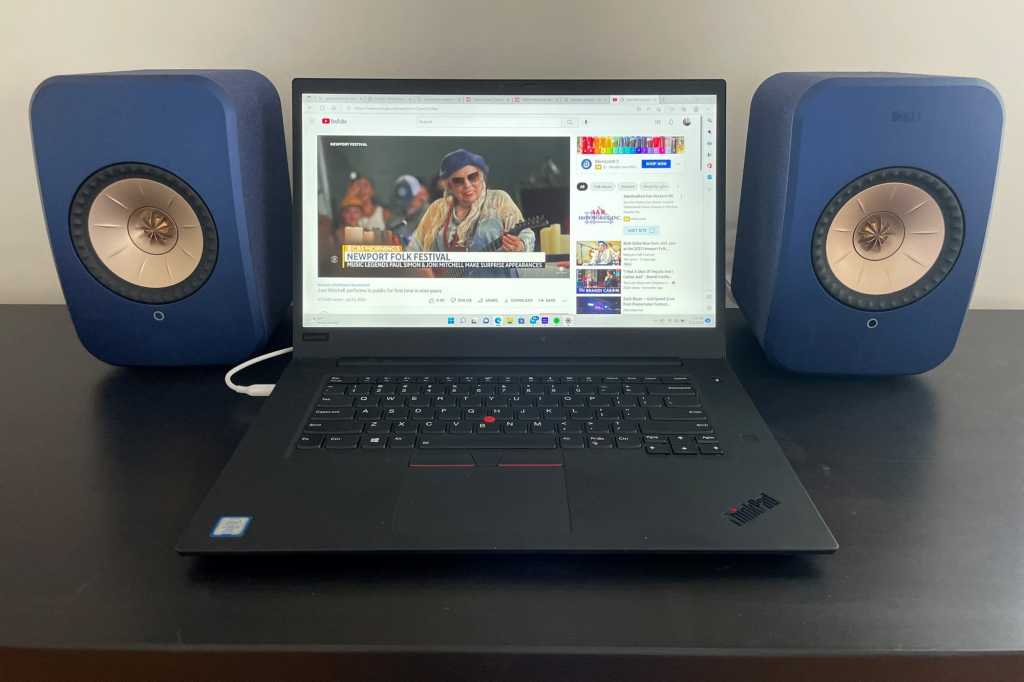Expert’s Rating
Pros
- Honest, expressive sound delivers what the artist intended
- Generous hardwired connectivity options
- Broad support for online music services
- Small footprint makes them easy to move from one room to another
Cons
- The KEF Connect app doesn’t do synchronized multi-room play
- Depending on the source material, can be overly bright for near-field listening
- You must dig into the online owner manual to discover and unlock “expert” setting options
- No controls on the speakers themselves
Our Verdict
Don’t let the small size fool you, the KEF LSX II wireless speaker system will deliver a stellar audio performance from all the major streaming services or any local source—analog or digital, including your TV–in any but the largest of rooms.
Price When Reviewed
$1,399.99
Best Prices Today: KEF LSX II wireless speaker system

$1,399.98
Free

$1399.98
Free
Music lovers seeking “the finer things” in audio gear, but who find themselves short on shelf space to set them up, need to look at the compact second-generation KEF LSX II wireless speaker system.
These snazzy-looking, splendid-sounding, seven-pound puppies measure just 9.5 x 6.1 x 7.1 inches (HxWxD) each, so you can tuck them into all sorts of places. Powered by custom-designed Class D amplifiers; wirelessly connectable to the web, to each other, and to the KEF Connect app, the LSX II works out with surprising verve, veracity, and versatility.
How does the KEF LSX II sound?
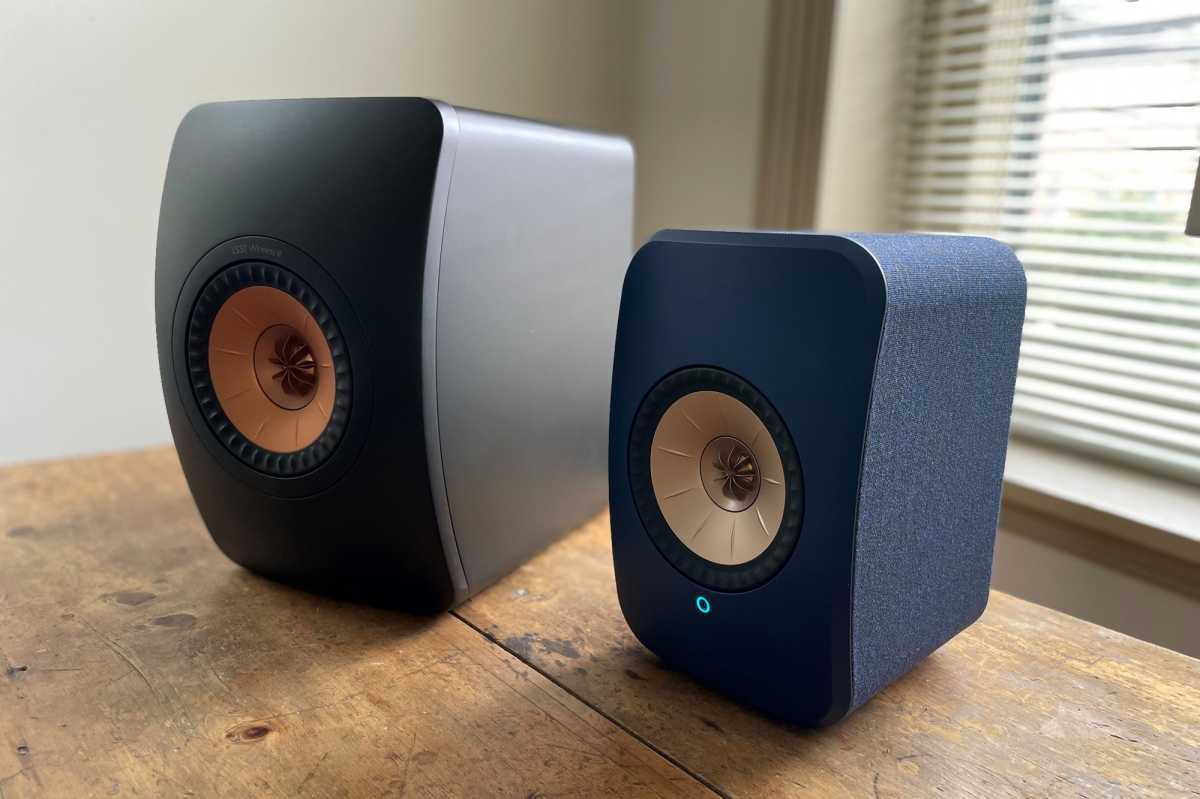
If you need a speaker system for a larger room, you might want to consider the beefier KEF LS50 II (left).
Jonathan Takiff/Foundry
Feeding well-engineered, naturalistic source material (jazz, classical, Americana, World, Broadway showtunes) from high-res sources including Qobuz, Tidal, and Amazon Music readily shows off the LSX II’s obsession with fine detail and well-balanced tonality; character traits that won my heart last year while writing my KEF LS50 Wireless II review. The KEF LSX II bears a marked physical and sonic resemblance to its $2,800 big brother.
Listening to everything from Queen B(eyonce)’s latest homage to club music, Renaissance; Burna Boy’s sweet and funky Afro Carribean shoutouts Love, Damini, and wunderkid; to Christone “Kingfish” Ingram’s blistering blues guitar on his album 662,I was happy to discover that the LSX II kicks decent bass, even without a subwoofer. (I found the first-generation’s low-frequency response to be somewhat underwhelming.)
Let me also point you to Anousha Shankar’s sensual symphonic raga suite Voice of the Moon (captured live in concert); jazz chanteuse Allison Wheeler’s gorgeous Winterspring; and the newly unearthed, spectacularly strong Lyceum Ballroom (London) performances from the Grateful Dead, finally being shared 50 years later as Europe ’72 Volumes 20-22. The jam band had a lot to prove those nights. Mission accomplished.

Jonathan Takiff/ Foundry
I also enjoyed plugging a Philips portable CD player into the KEF LSX II’s 3.5mm analog input to virtually relive the Bruce Springsteen & The E Street Band concert disc Greenvale NY 1975. This was a C.W. Post College performance a younger me was lucky to witness in Bruce’s show-stopping, house-rocking, primo-voiced, and oh-so-romantic and funny prime.
Captured on tape by the Record Plant mobile truck, and newly tuned up with Plangent Processes (a technology praised for its ability to correct wow and flutter effects while transferring recordings from analog tape), this historic recording isn’t to be found on any streaming service. It must be purchased as a CD or as a digital download from a service such as Nugs.net. (You’ve probably heard one track from that blustery night: the group’s delirious, big-beat retooling of Santa Claus is Coming to Town.
The presence of a USB-C port makes these second-gen entertainers a great audio companion for a computer, too, allowing you to play up to 96kHz/24-bit digital audio files. But I sometimes found near-field listening fatiguing because these speakers are so darned bright and detailed and (dare I say?) unforgiving.
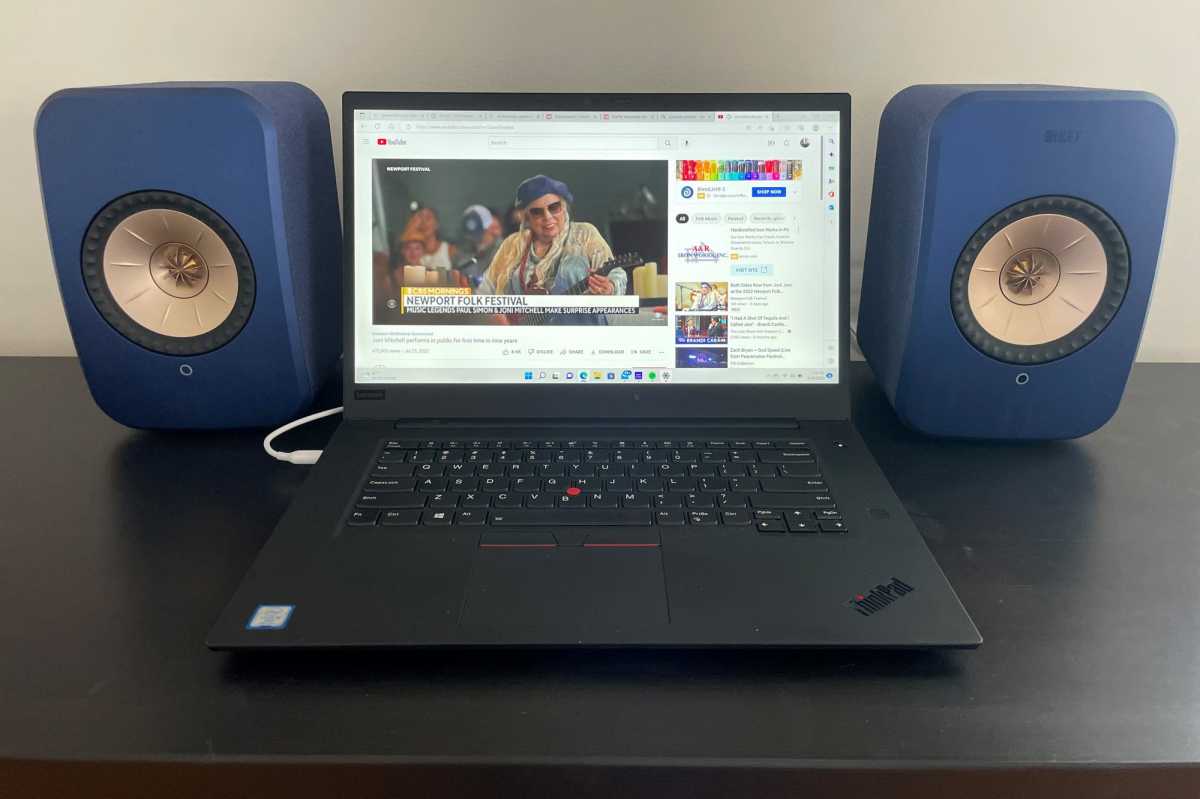
Thanks to the LSX II’s ability to perform as a USB audio device, I was able to listen to–and watch on YouTube–Joni Mitchell’s incredible comeback performance at the Newport Folk Festival.
Jonathan Takiff/Foundry
That said, I didn’t suffer any such weariness watching YouTube clips of Joni Mitchell’s recent comeback at the Newport Folk Festival (some shot on a smartphone.) But I was distracted when sitting this close and listening to Qobuz- and Tidal-delivered renderings of the Beethoven Symphony No. 1 (with Yannick Nezet-Sequin conducing the Chamber Orchestra of Europe), as well as the Live album session by my second-favorite So-Cal singer/songwriter Karla Bonoff.
The culprit with both recordings is microphone overload/distortion, with an occasional piercing/peaking edge in violins and vocals in evidence until I used the KEF Connect app to roll off a bit of treble (-1.25dB). I saved this setting in a custom-named file for easy retrieval later.
The LS50 Wireless II dealt with these same over-modulating maladies without the need for EQ tweaking. That suggests there really is something to the Metamaterial Absorption Technology (MAT) introduced in the 12th-gen Uni-Q driver array to reduce high-end tweeter distortion out the rear port. MAT makes Uni-Q more adept at smoothing high-frequency distortion anomalies. The LSX II use KEF’s 11th-gen Uni-Q (more on that in a bit).
But let’s not ignore that those larger KEF LS50 II speakers also have significantly more headroom to deal with programming peaks–they’re running on 380 watts of power per channel, versus the LSX II’s 100 watts per side.
How has the KEF LSX II been upgraded?
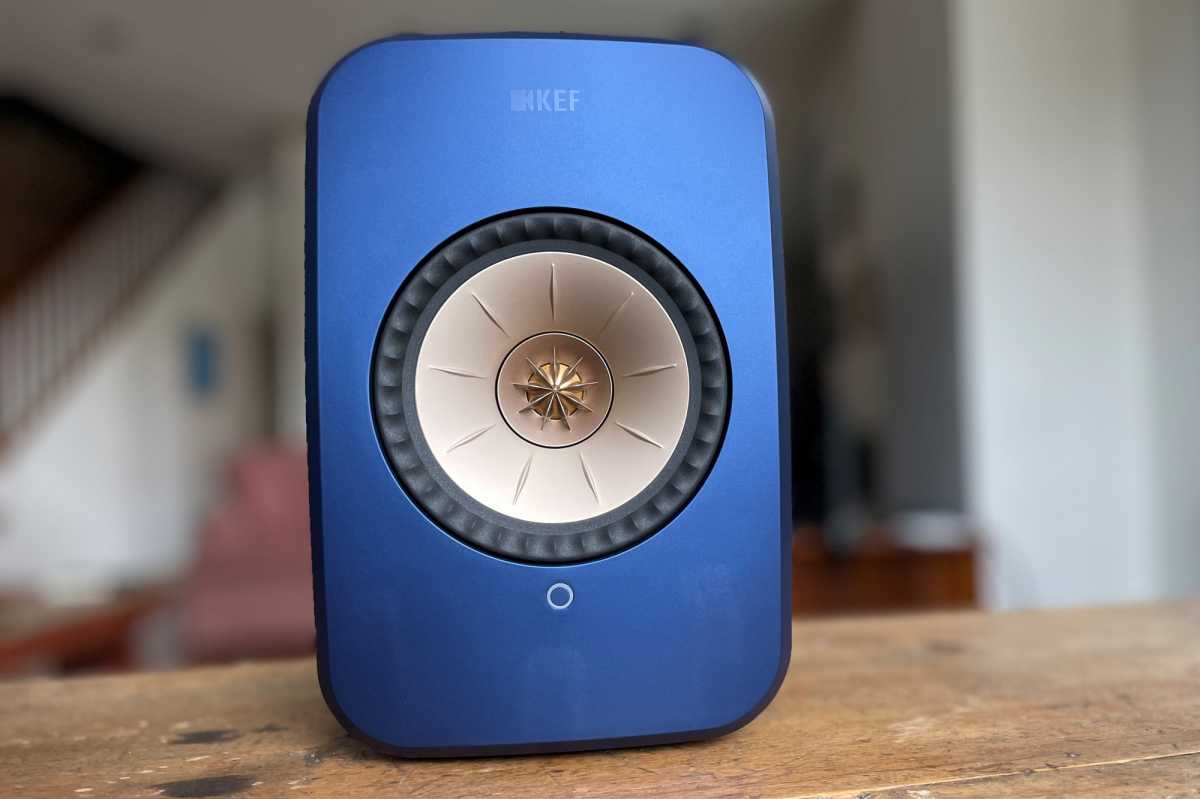
The LSX II feature KEF’s 11th-generation Uni-Q driver array.
Jonathan Takiff/Foundry
The KEF LSX II’s upgrades aren’t obvious. The tastefully tinted drive unit that dominates the face of each speaker is a carryover from the original model. It’s the 11th-generation of KEF’s Uni-Q driver array, which positions a 0.75-inch aluminum tweeter in the center of a 4.5-inch composite aluminum woofer/midrange cone to create a unified, wide-dispersing sound impression. At once KEF’s visual signature and sonic claim to fame, it’s no wonder the company’s speakers never come with grilles.
The new generation’s power specs haven’t changed either: Class D amplifiers still deliver 70 watts to each woofer/midrange and 30 watts to each tweeter.
So, how does KEF explain the LSX II’s improved bottom-end performance? Credit a reprogramming of the DSP software running the show—KEF calls this its Music Integrity Engine—to better serve the music, maximize the speakers’ timing and mechanics, and to contour (with the user’s assistance) the output to the characteristics of any room the LSX II is placed.
That enables the Uni-Q driver array and the enclosures’ rear-firing ports to carve out emphatic, well-defined bass notes that seem bigger and bolder than you would think such small speakers could manage.
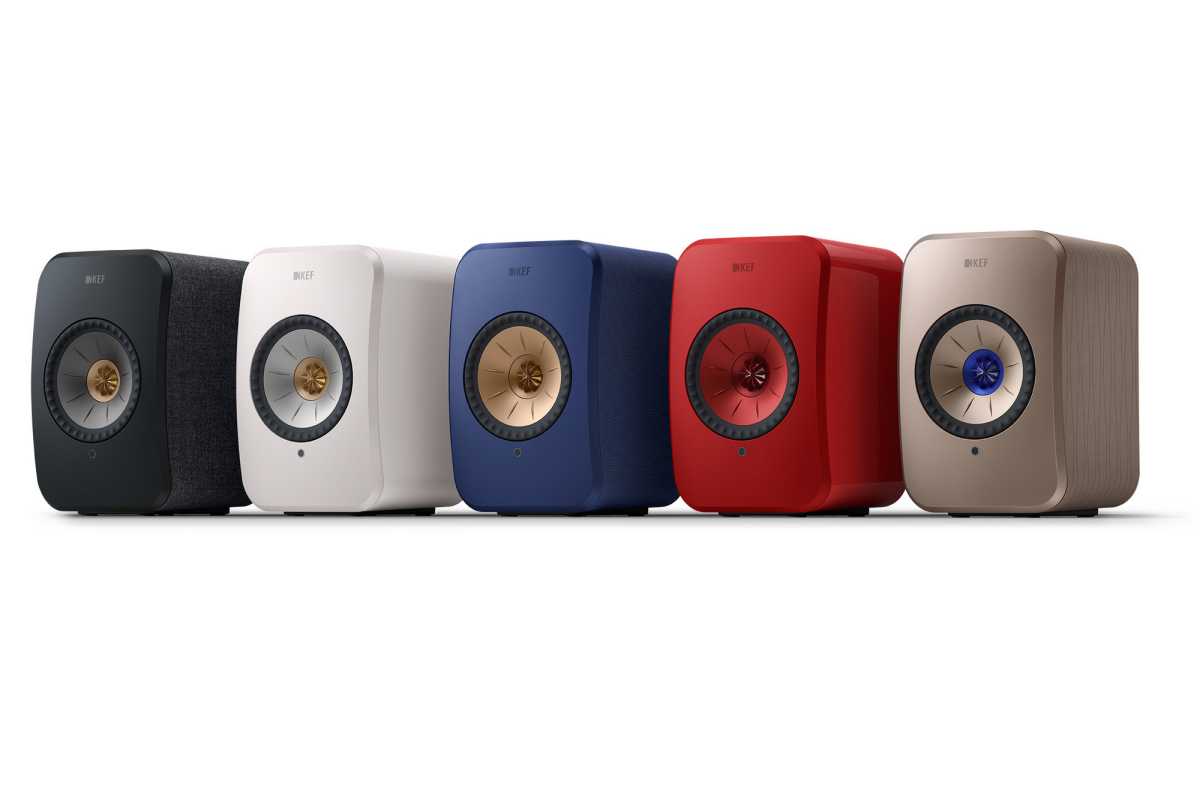
The KEF LSX II is available in a range of color choices, three of which wrap the enclosure in fabric.
KEF
The mostly polymer enclosure—offered in a tasteful variety of colors—has also been carried over, wrapped in a Danish fabric if you buy a pair in Cobalt Blue (my review unit choice), Carbon Black, or the putty-toned, Soundwave by Terence Conran Edition. Don’t dig textile-clad cabinets? The LSX II is also available in two painted finishes: Mineral White (matte) and Lava Red (high gloss).
Does the LSX II use KEF’s W2 wireless platform?
KEF upgraded the LSX II to the same W2 wireless platform you’ll find KEF’s pricier wireless speakers, all the way up to its KEF LS60 floor-standing tower speakers ($6,999.99 for the pair.) That platform includes a dual-band (2.4- and 5GHz) 802.11ac Wi-Fi adapter.
The first LSX speaker system (introduced in late 2018) was designed and marketed mostly for computer workstation and music-streaming applications (with high-res TOSLINK optical and 3.5mm analog inputs, plus Bluetooth 4.2 and Apple AirPlay 2 support). The second-generation benefits from a significantly upgraded I/O panel on the primary speaker’s backside for hardwired audio connections. Google Chromecast joins AirPlay 2 support.
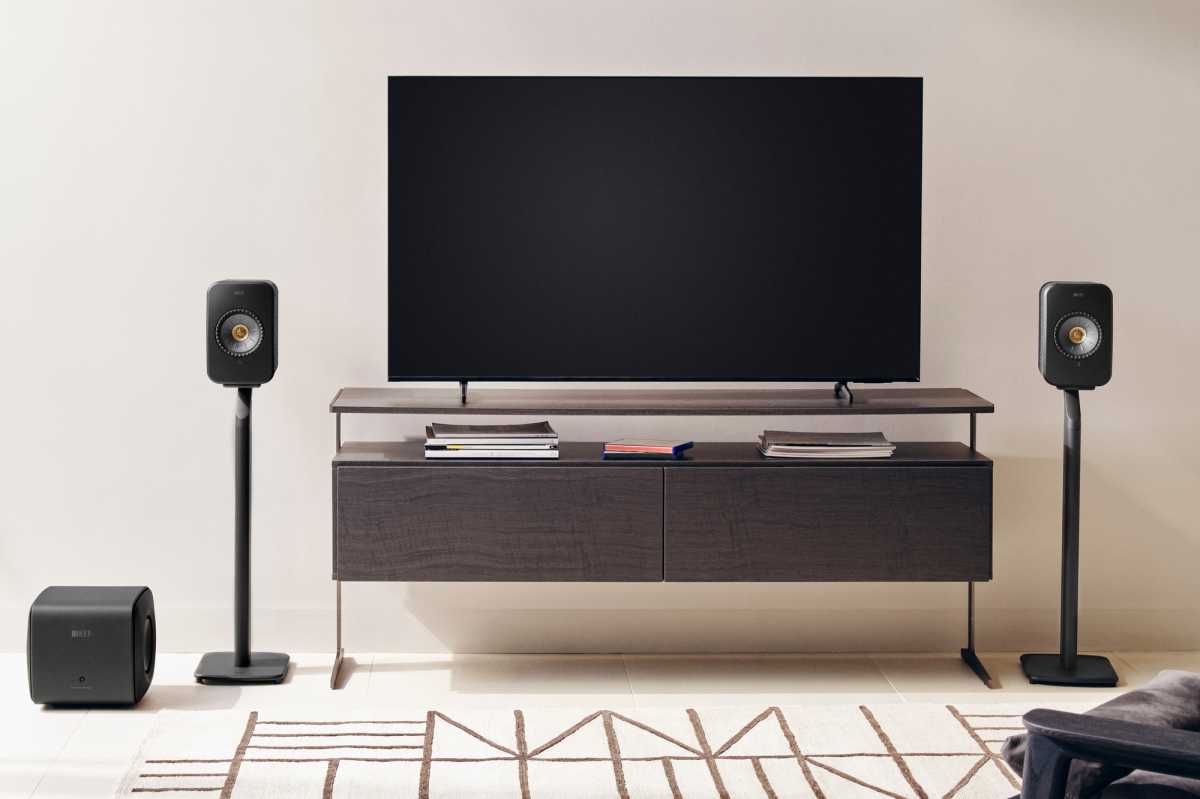
The KEF LSX II is outfitted with HDMI ARC, so you can connect the speaker system to your TV.
KEF
You can now readily use the KEF LSX II as high-resolution TV speakers: Just run a cable from your TV’s HDMI ARC to the newly planted HDMI ARC input on the LSX II. Thanks to CEC capability, the LSX II’s volume can be adjusted with the TV’s remote control (just remember to switch the TV’s audio output to PCM).
The LSX II also comes with its own IR wireless remote, which is helpful—at least if you’re right in front of the rig—for adjusting the volume, pausing/resuming play, and changing the input. There are no controls on the speakers themselves, just a color-shifting light ring (below the primary speaker’s Uni-Q) that briefly flashes to indicate which input you’ve selected.
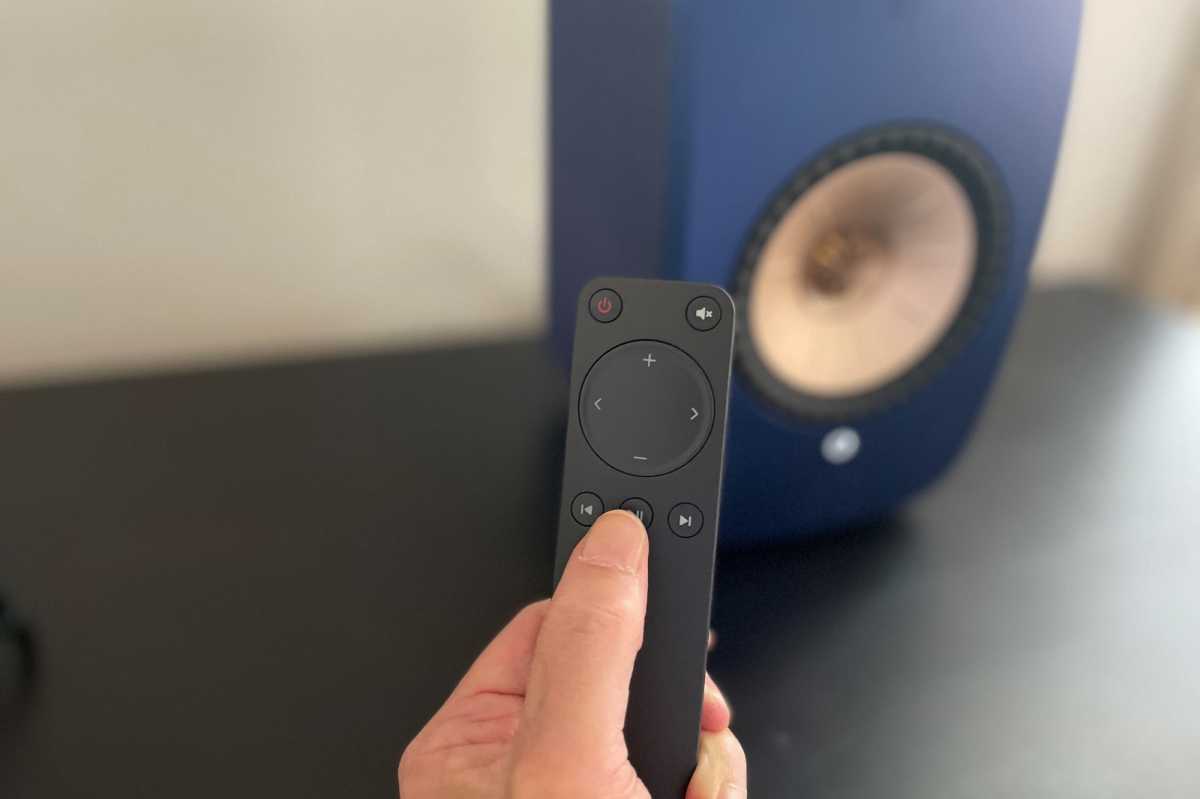
Curiosly, KEF’s remote control doesn’t have buttons for selecting the source you wish to listen to.
Jonathan Takiff/Foundry
The KEF LSX II can handle digital audio streams with resolutions up to 384kHz/24-bit—including DSD files—from local network sources. You can also access music from all the top subscription music services, including Amazon Music, Deezer, Qobuz, Spotify (via Spotify Connect), and Tidal (via Tidal Connect, including MQA support), as well as from free, global internet radio stations and podcasts galore. The system is Roon Ready, too (you can read TechHive’s in-depth Roon review at the preceding link).
Be aware, however, that even when you hardwire the left and right speakers to each other (a practice I recommend), the LSX II will resample everything to 96kHz/24-bit. Resampling drops to 48kHz/24-bit if you interconnect the speakers wirelessly. Wire a pair of the much-pricier KEF LS50 II together and you’ll get up to 192kHz/24-bit resolution. Will your ears hear the difference? Maybe.
But take note: multi-room synchronized play is not currently programmable with the KEF Connect app. That’s a shortcoming the maker ought to remedy; otherwise, how are they to sell this sonically superior system as a “better than Sonos” (or Bose, or BluOS) whole-home-audio solution? The offerings from those competitors support multi-room audio like nobody’s business.
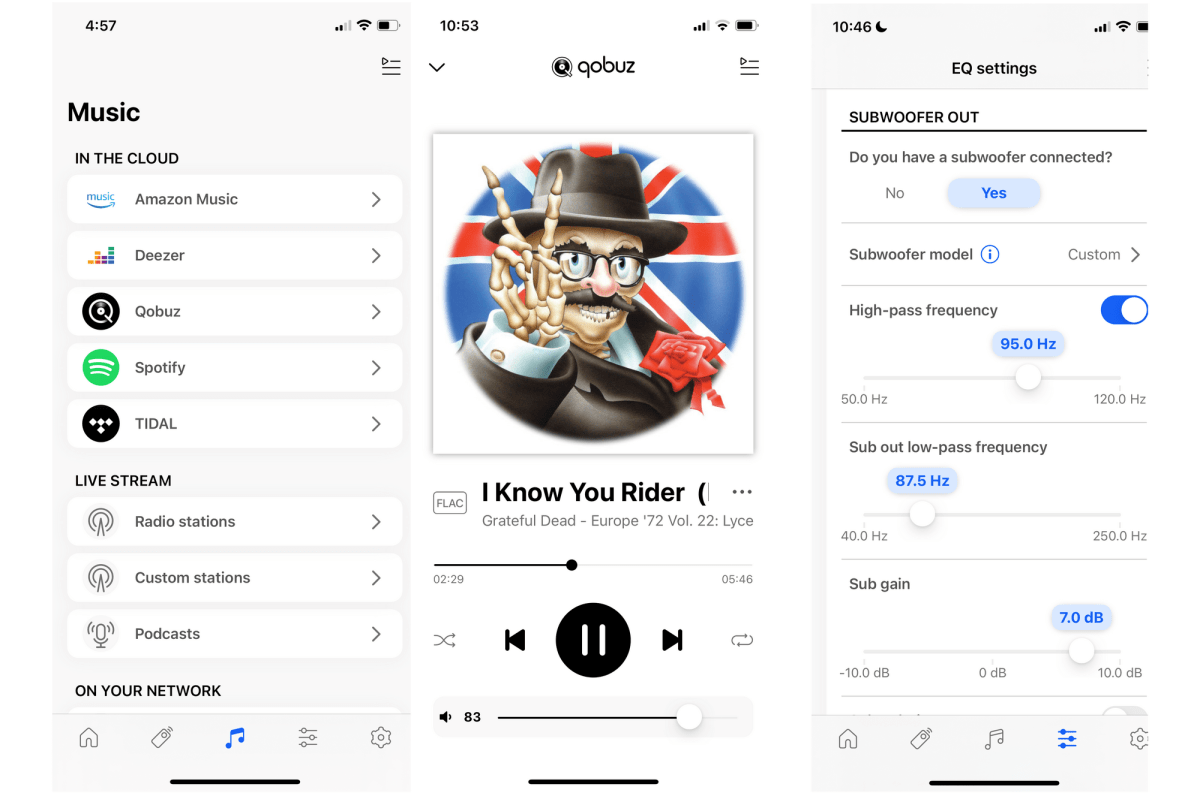
KEF’s otherwise terrific KEF Connect app doesn’t provide for synchronized multi-room audio.
Jonathan Takiff/Foundry
Can you connect a subwoofer to the KEF LSX II?
While the KEF LSX II is self-sufficient for most of the music I like when listening in a small or mid-size room, adding a subwoofer when I moved the speakers to my open floor plan living/dining/kitchen level proved a really good idea for the Springsteen set to celebrate the take-no-prisoners work of E Street bassist Garry W. Tallent and percussion master Max Weinberg. In his youth, “Mighty Max” attacked the skins with a soul-revue fervor so intense he had to soak his mitts in ice water afterwards—he eventually needed hand surgery. No, the guy doesn’t torture himself like that anymore.
KEF makes it super easy to connect these speakers to one of its own powered subwoofers, as I learned by adding a KEF Kube 10b ($749.99). With customizing instructions found in the online manual, you just dial in the sub’s model number in the KEF Connect App and it automatically sets the high (main speakers) and low (subwoofer) crossover points.
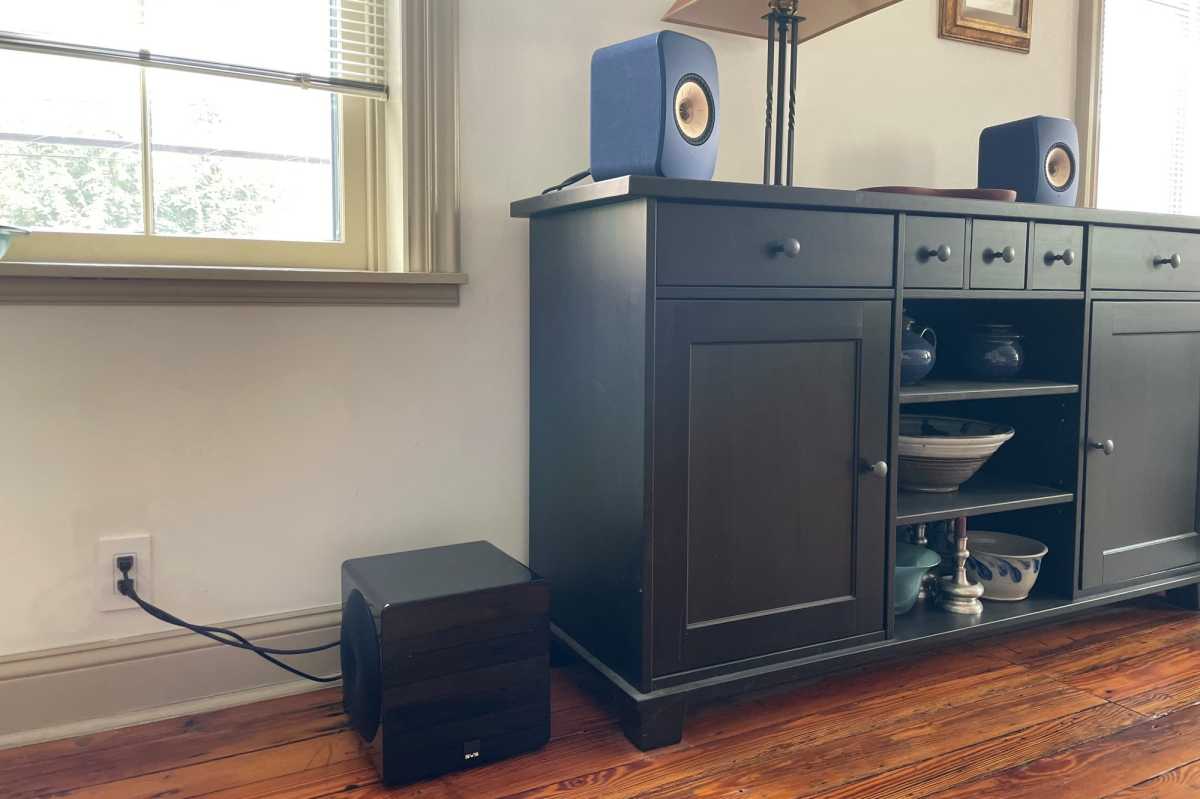
KEF offers its own KEF Kube 10b subwoofer, but I found the SVS Micro 3000 to be an even better low-end companion to the system.
Jonathan Takiff/Foundry
By contrast, adding the smaller—but stunning—SVS Micro 3000 sub ($899) took a bit of custom tuning on my part, listening and adjusting the EQ filters and main/sub balance levels. But at least you can do that on the fly in KEF’s app, whilst the music plays. I achieved a likeable wallop with the high-pass frequency set at 95Hz and the sub-out low-pass frequency at 90Hz. If you don’t mind spending the time to dial things in, the more compact dimensions of the Micro 3000 seem more appropriately sized for pairing with the small LSX II.
Another aesthetically matched pairing option would be with KEF’s compact KC62 subwoofer, but at $1,499.99, that little boom box costs even more then the KEF LSX II. That’s a lot of dough for another octave of bass.
Should you buy the KEF LSX II?
As you’ve now gathered, I moved the KEF LSX II to a variety of spaces in my house. That’s easy when you’re dealing with a small footprint and 7-pound weight. Positioned within range of a Wi-Fi router, these boxes don’t need to be hardwired to your network. I did discover, however, the benefits of wiring the left and right speakers to each other with the supplied ethernet cable to achieve signal stability and higher-resolution audio support.
This unanticipated transportability just made me appreciate the KEF LSX II even more, like an ever cheerful puppy who follows you around and plops down wherever you happen to be. Who doesn’t want a pal like that? Who wouldn’t love speakers like that?

